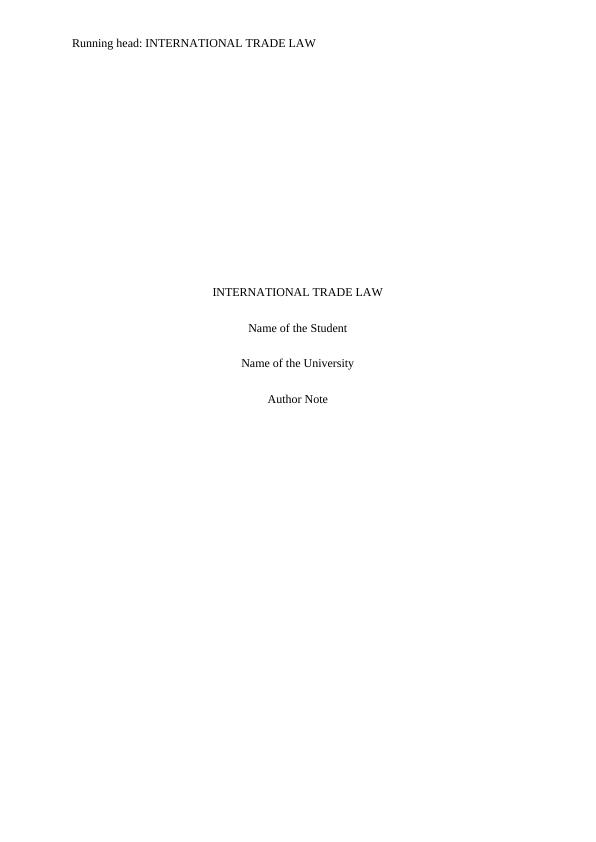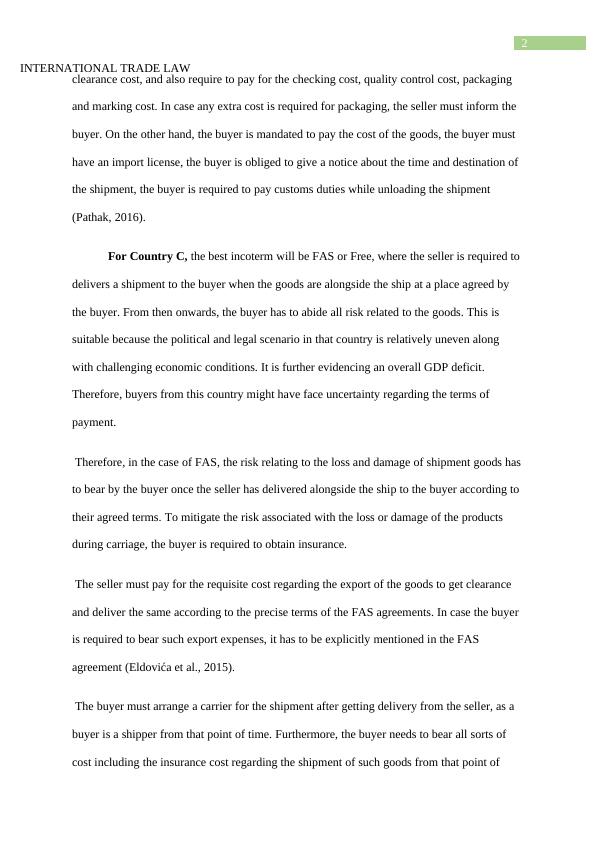International Trade and Law Case Study 2022
This is a group-based assignment for the LOG305 International Trade Law course, where students are required to form a group of 4 members and submit a single report. The assignment is worth 20% of the final mark and the due date is 14 April 2020.
9 Pages2607 Words23 Views
Added on 2022-09-22
International Trade and Law Case Study 2022
This is a group-based assignment for the LOG305 International Trade Law course, where students are required to form a group of 4 members and submit a single report. The assignment is worth 20% of the final mark and the due date is 14 April 2020.
Added on 2022-09-22
ShareRelated Documents
End of preview
Want to access all the pages? Upload your documents or become a member.
What is free or freight on board (FOB)?
|5
|727
|12
A Simple Guide To Understanding Incoterms
|4
|734
|14
Use of Incoterms in International Trade
|9
|1767
|1
Transport and Distribution Management Essay 2022
|14
|3103
|8
Shipper-Carrier Obligations- International Laws and Agreement
|8
|2231
|30
Understanding FOBs and Their Role in International Law
|11
|3770
|21



